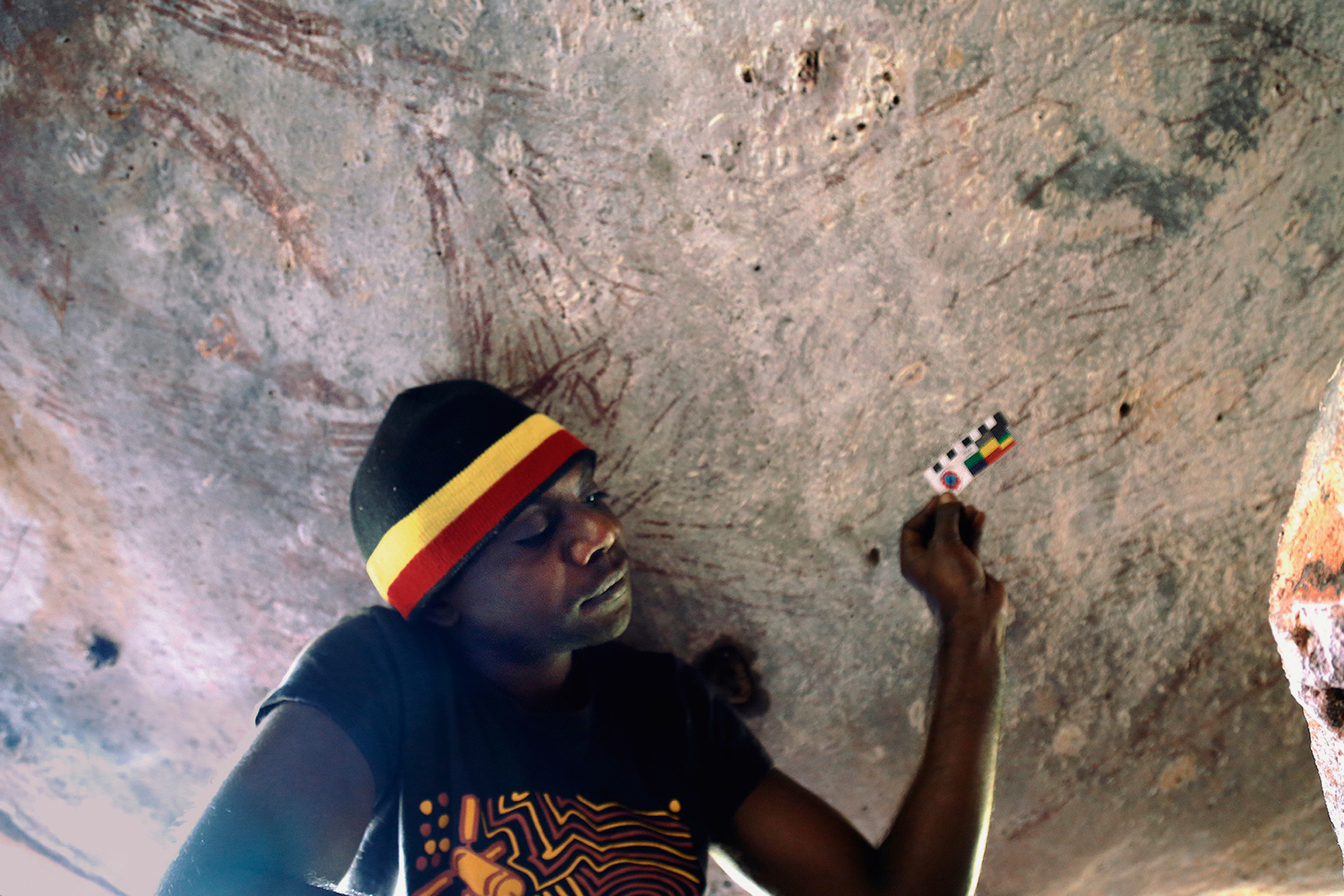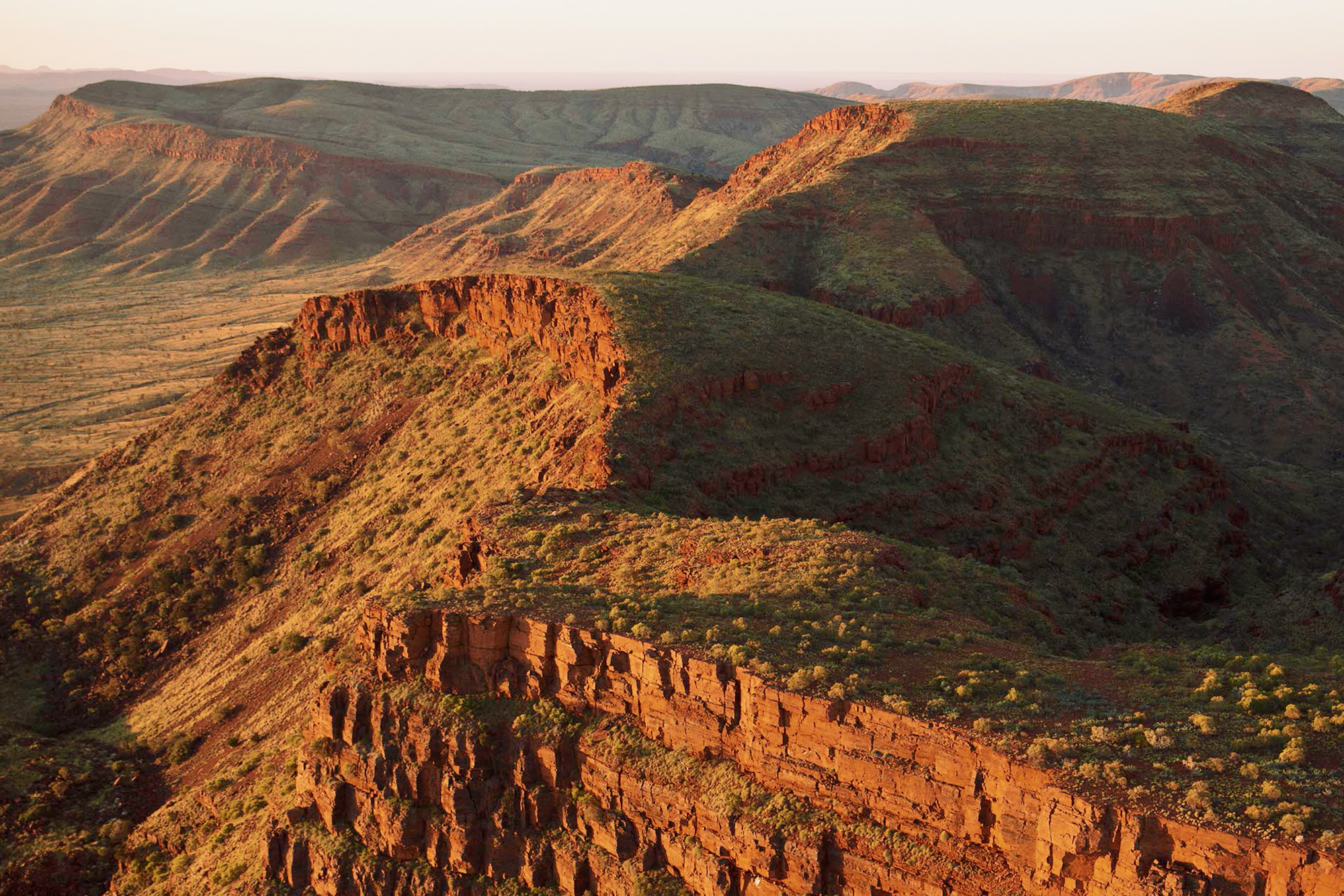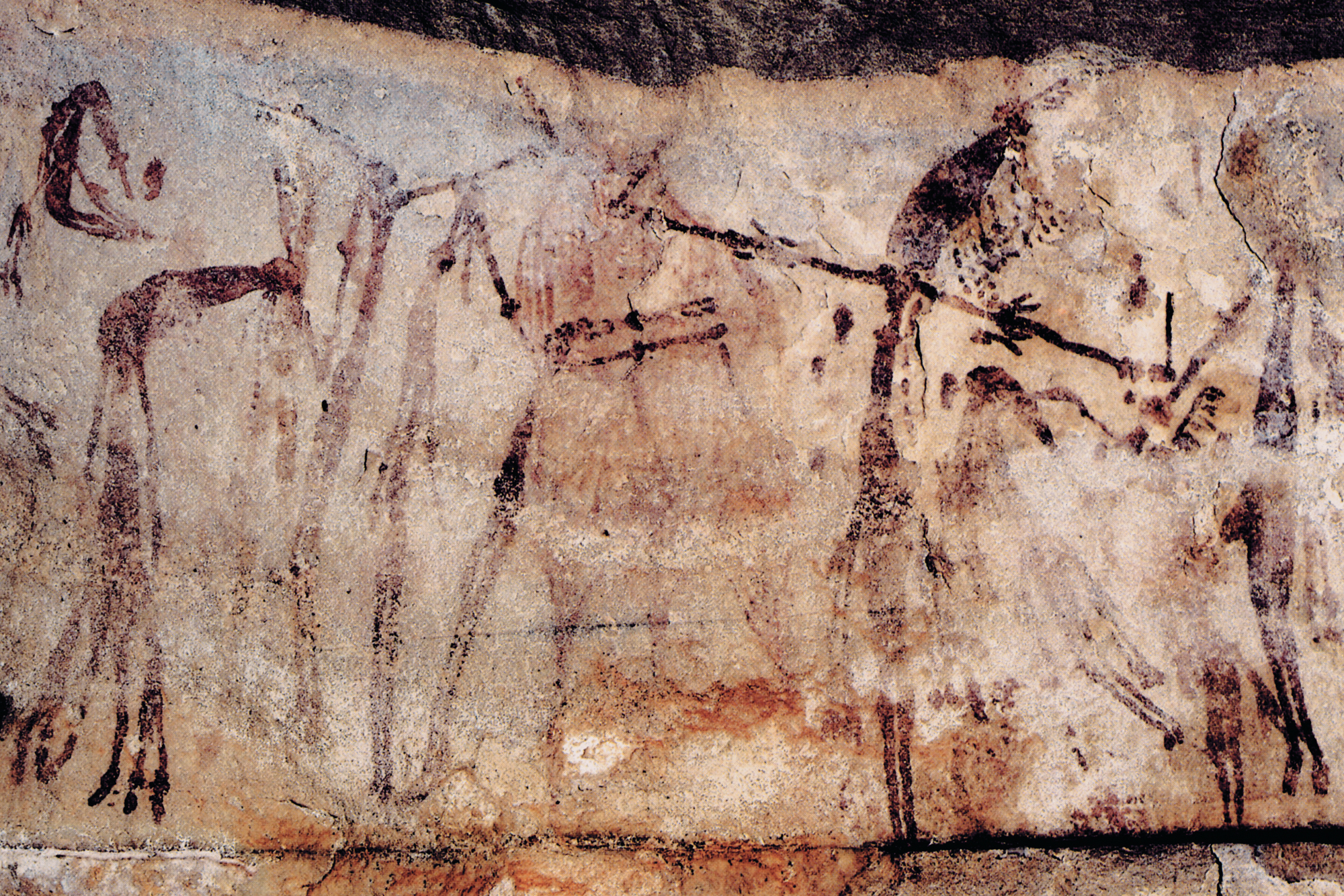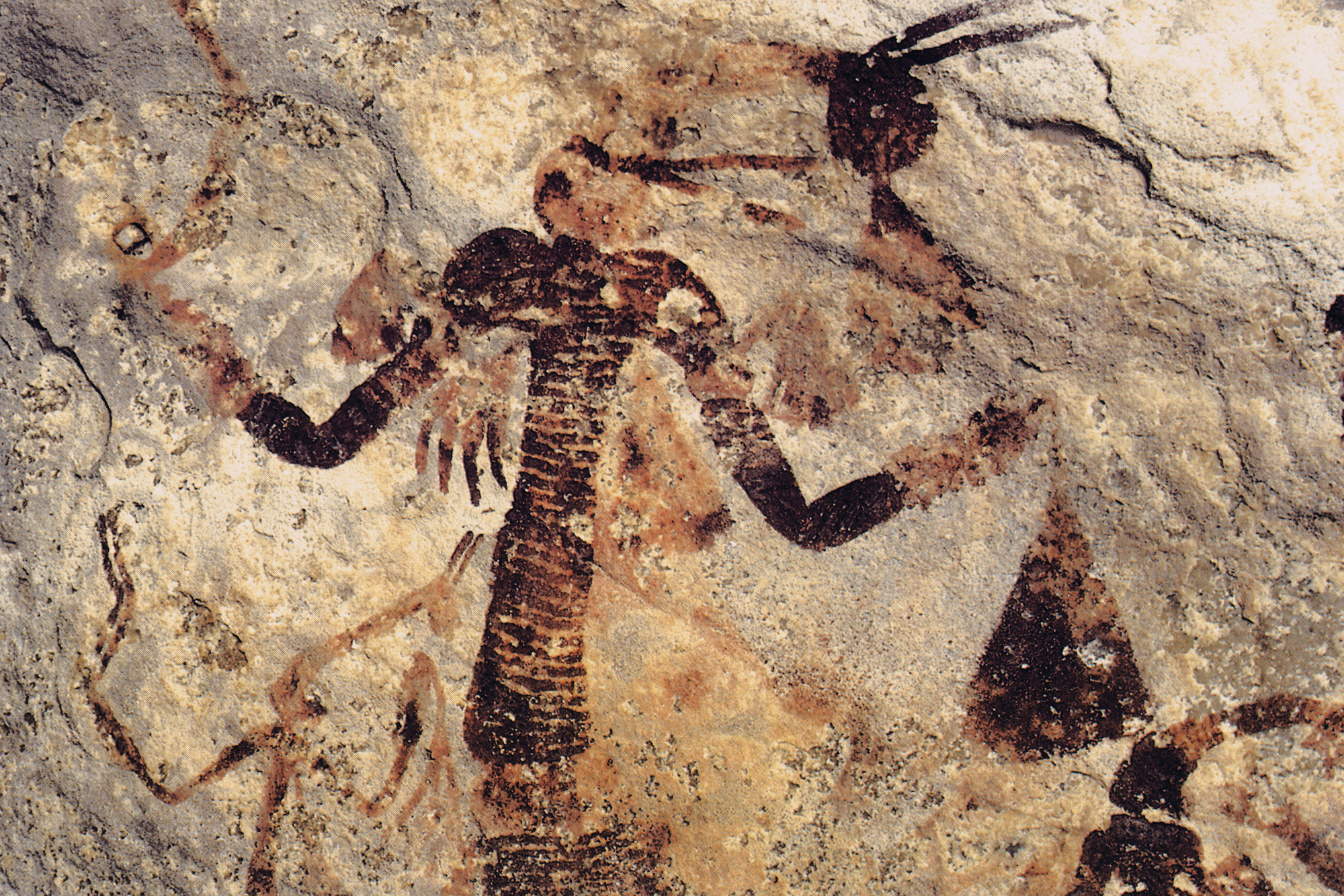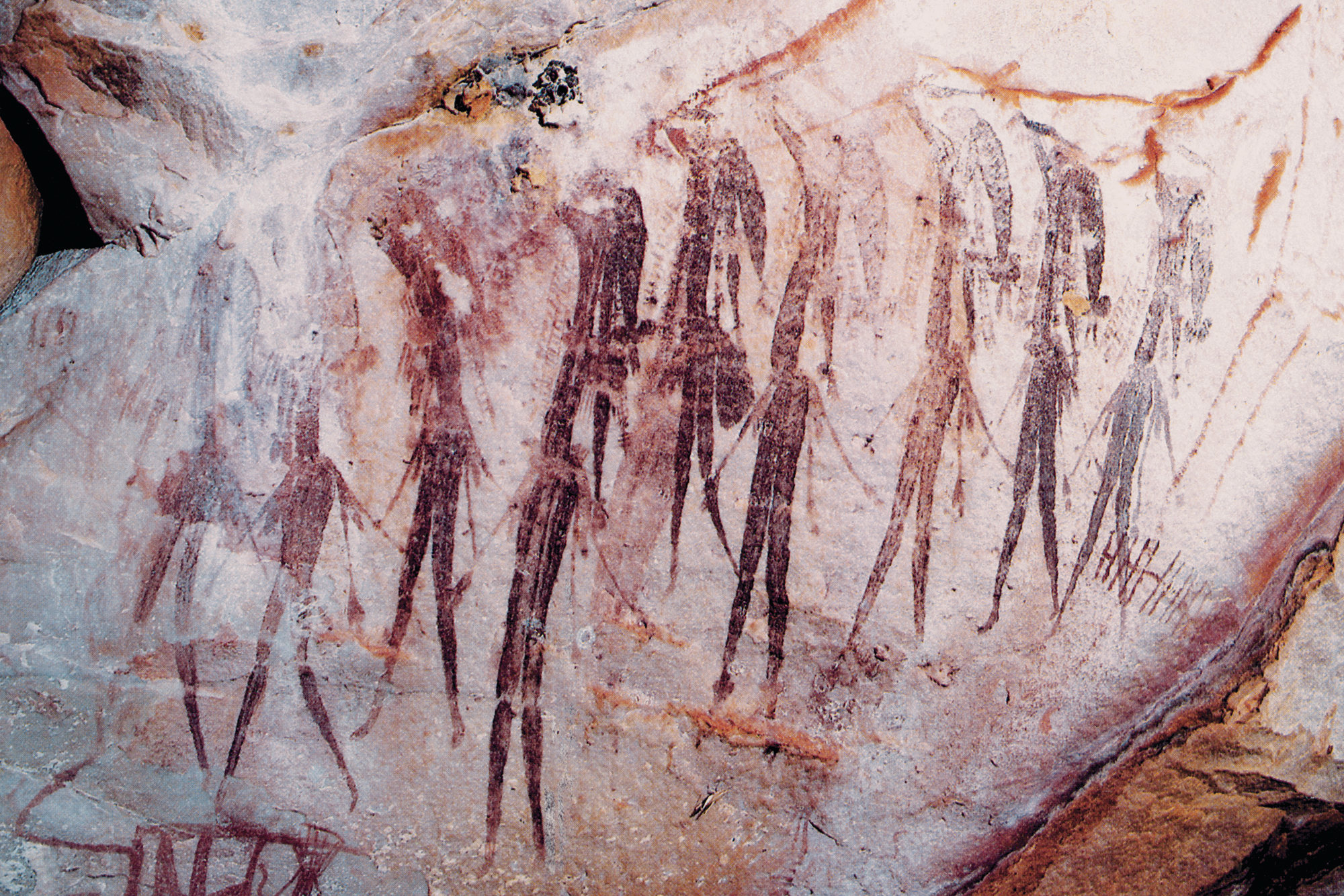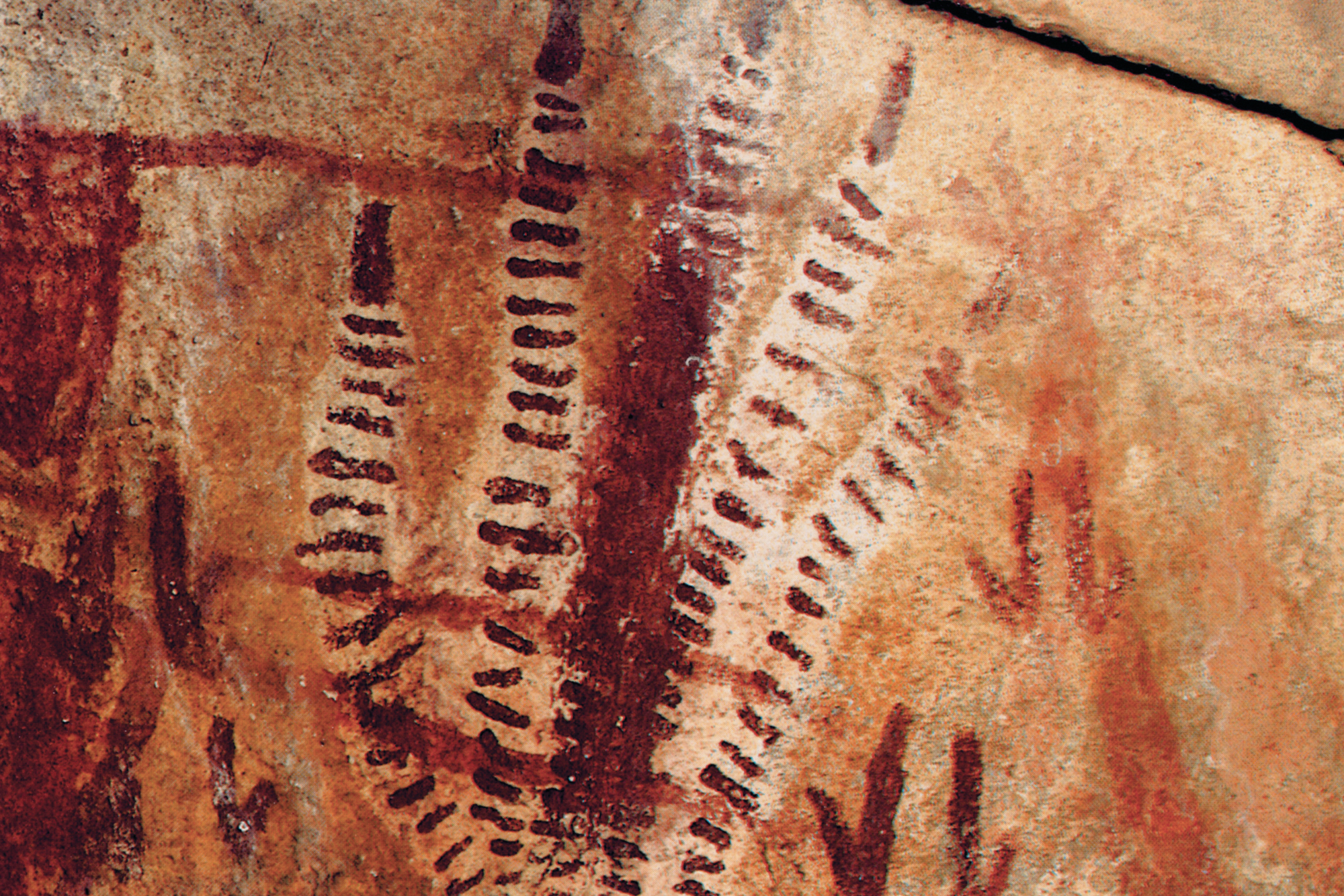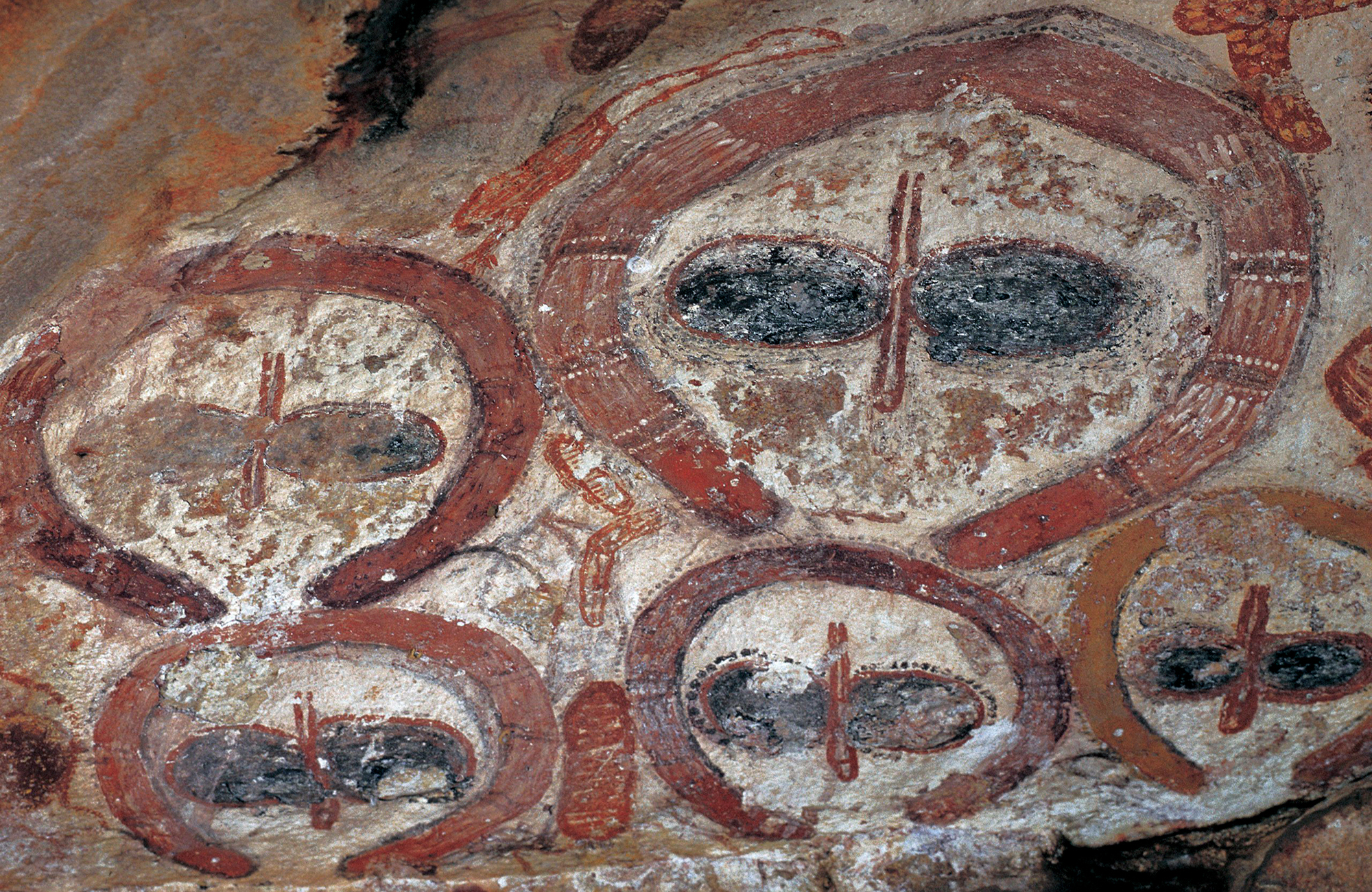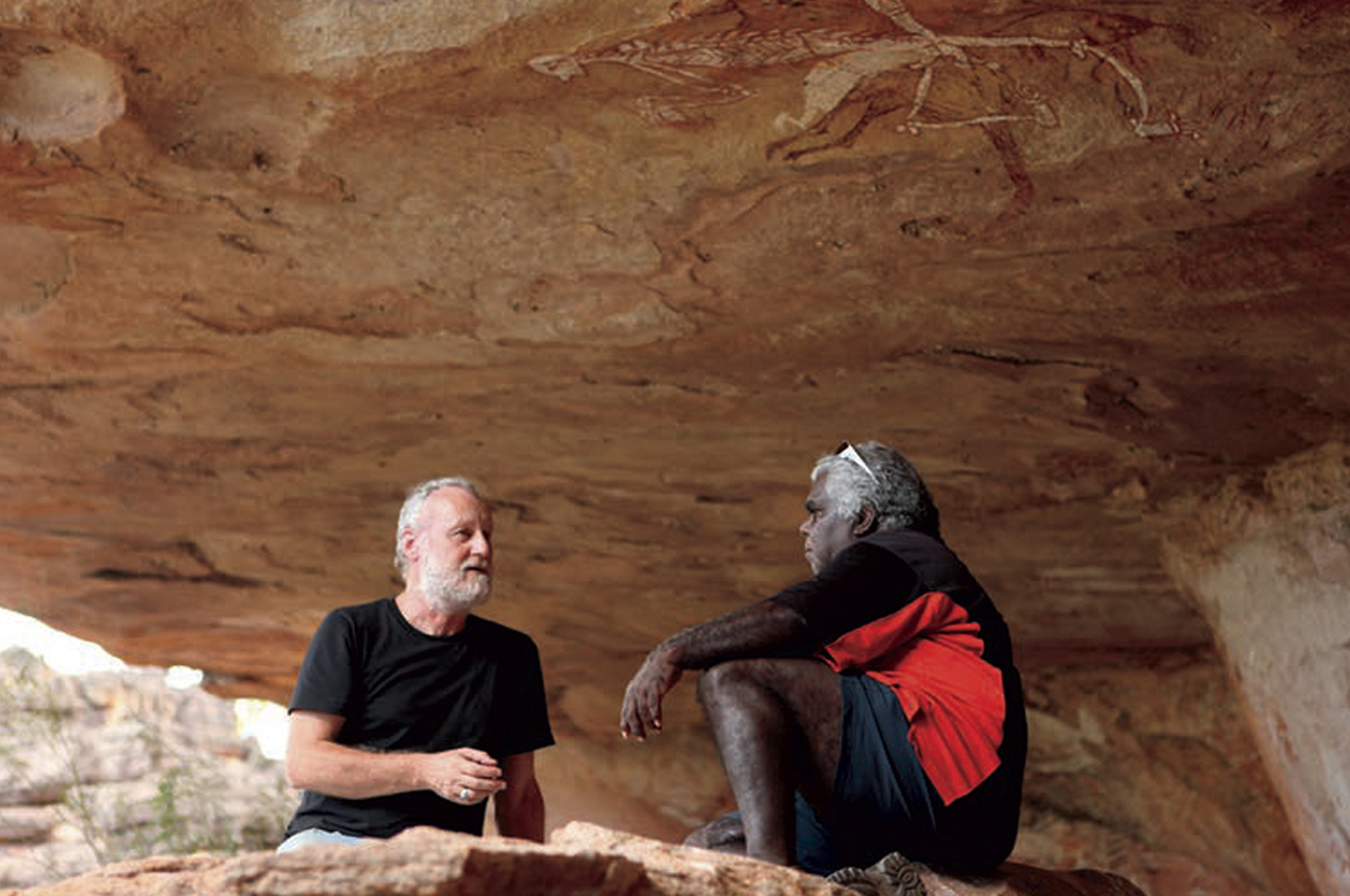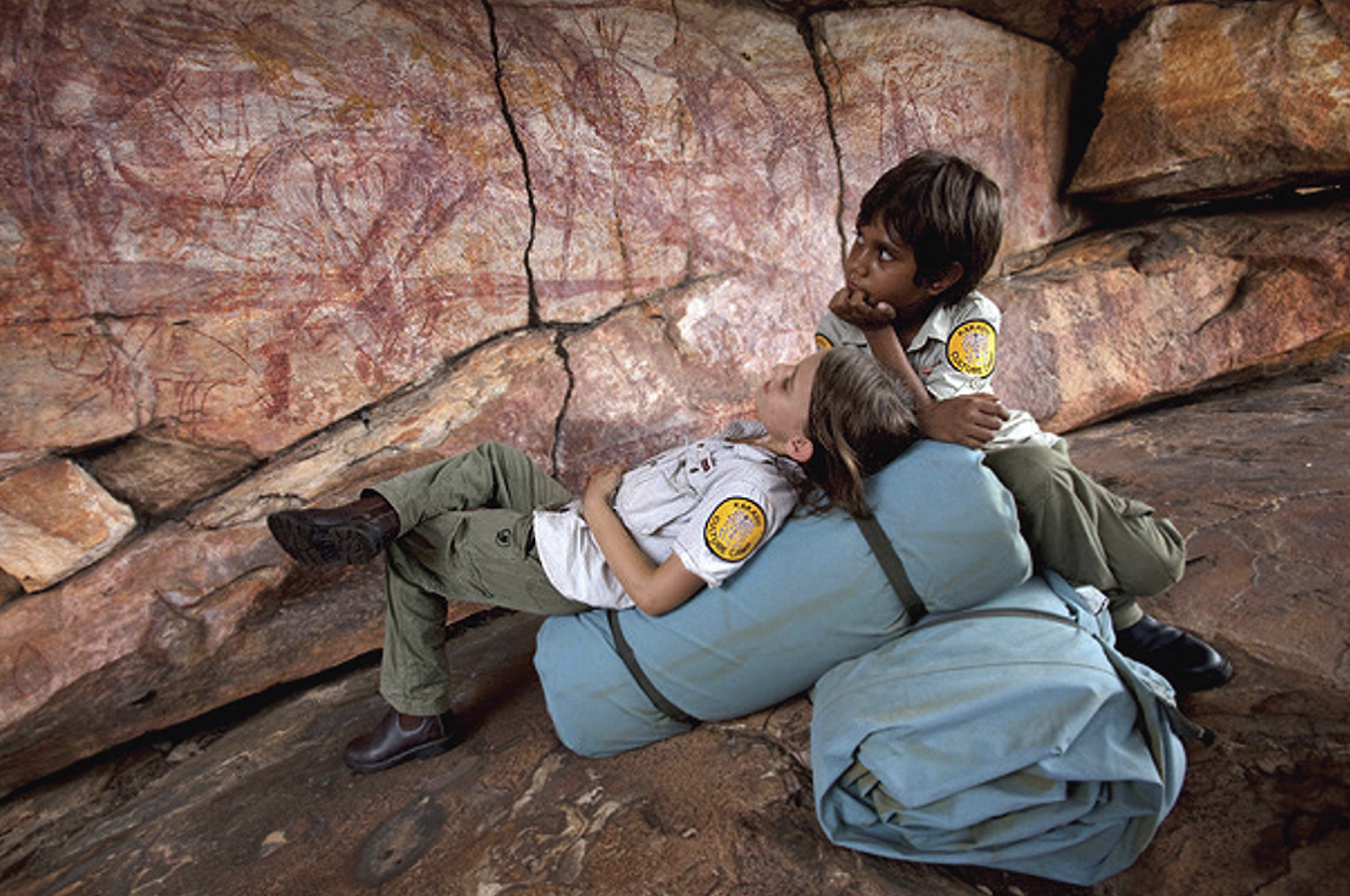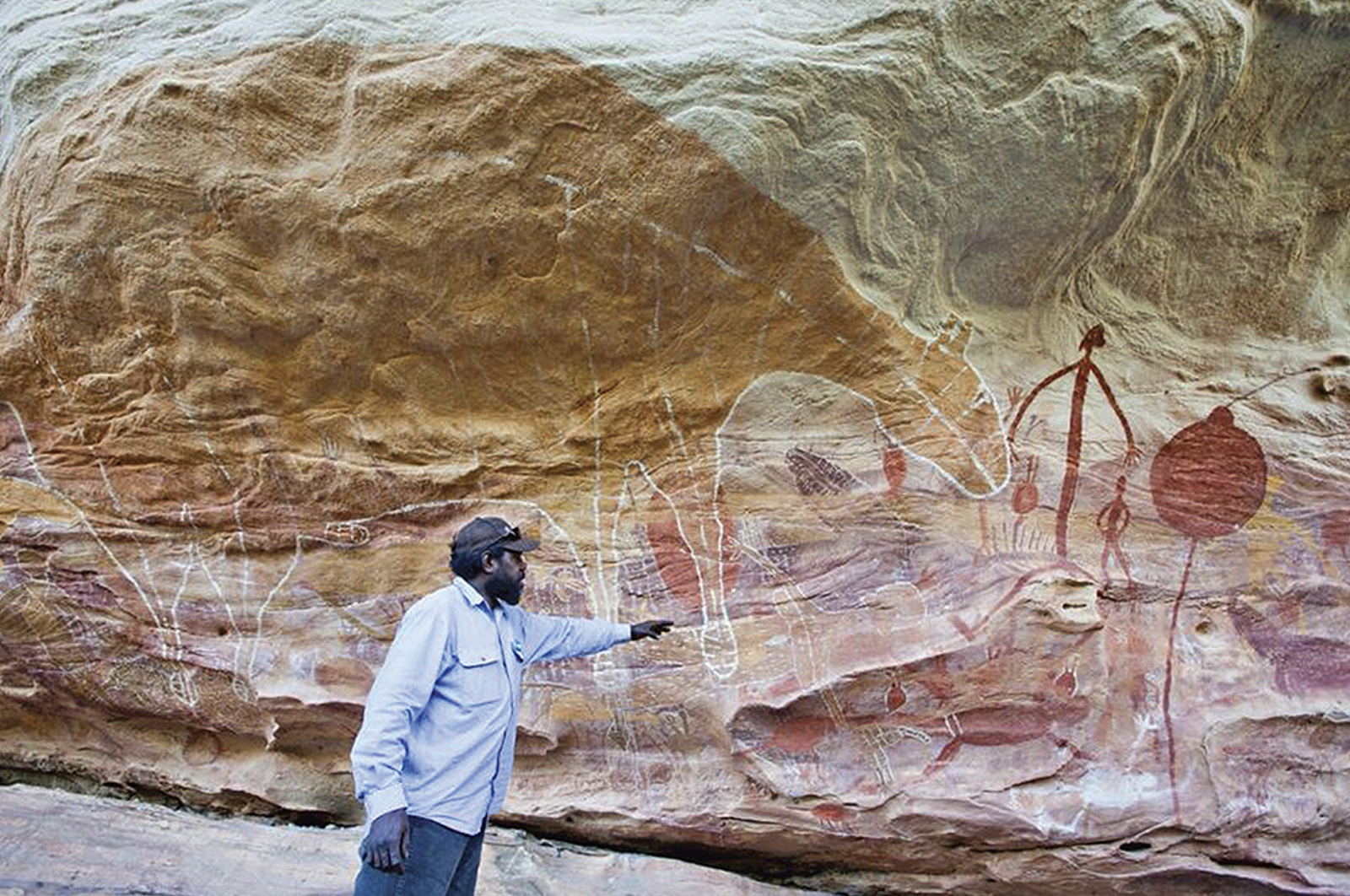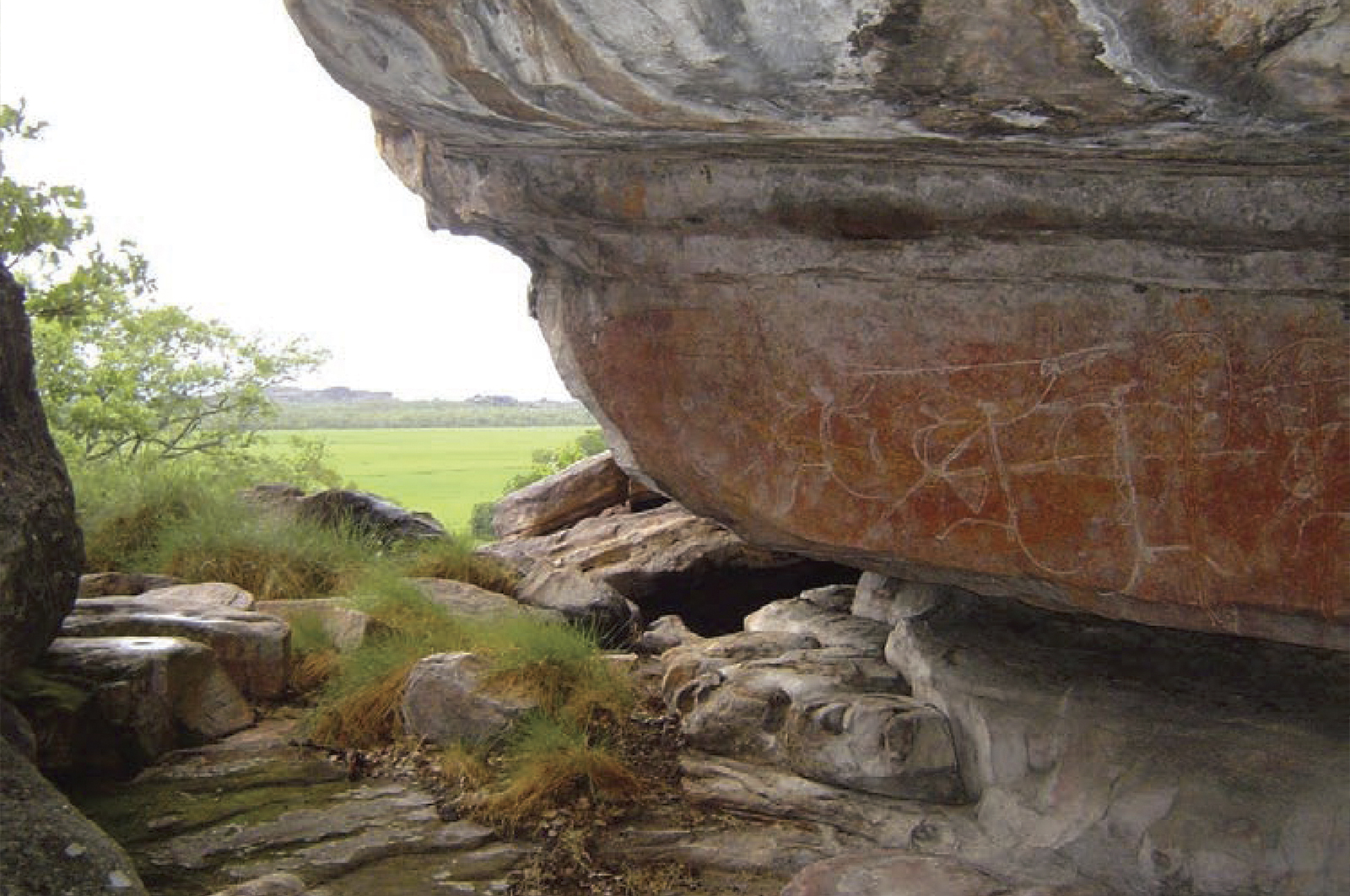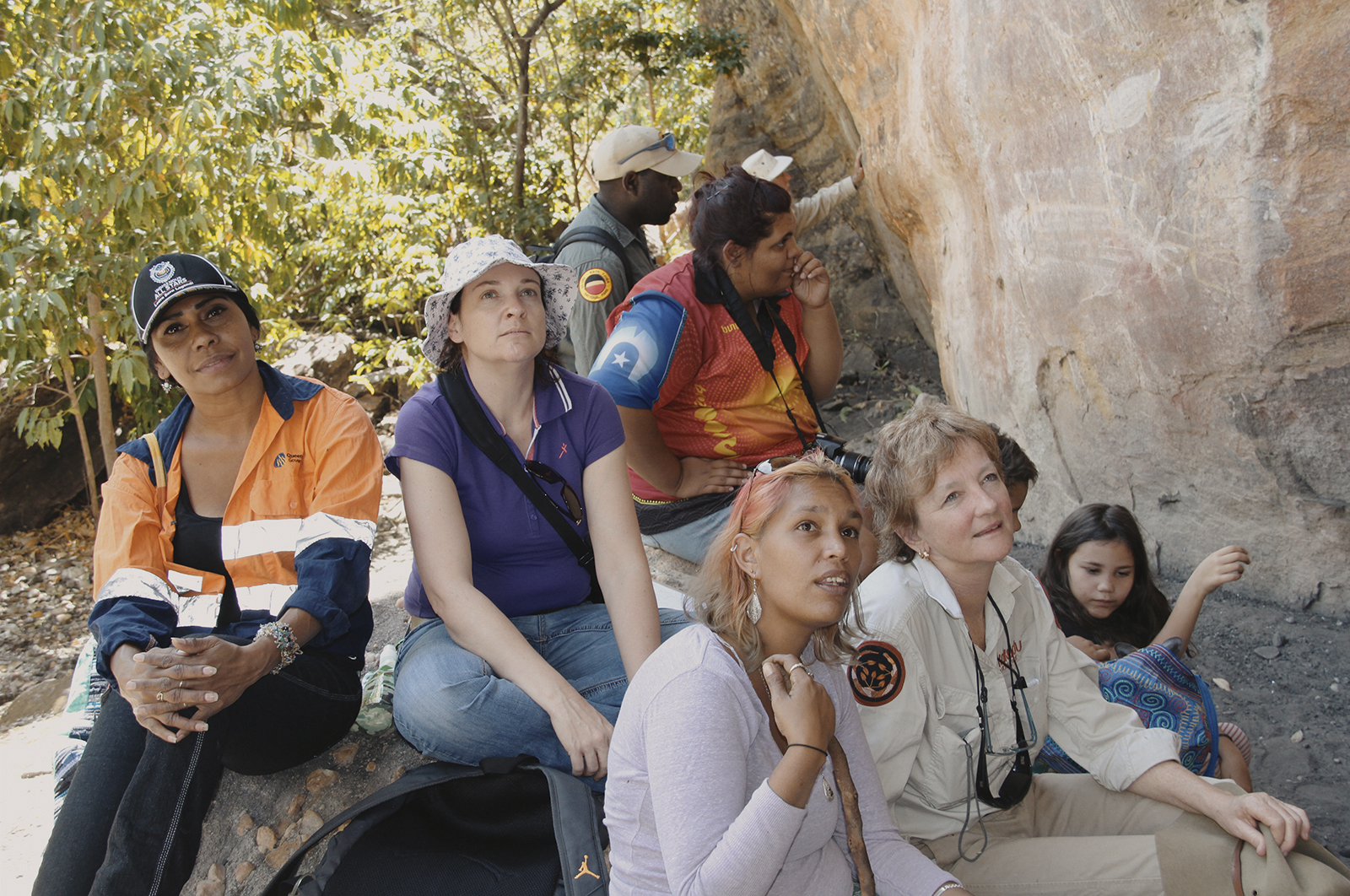


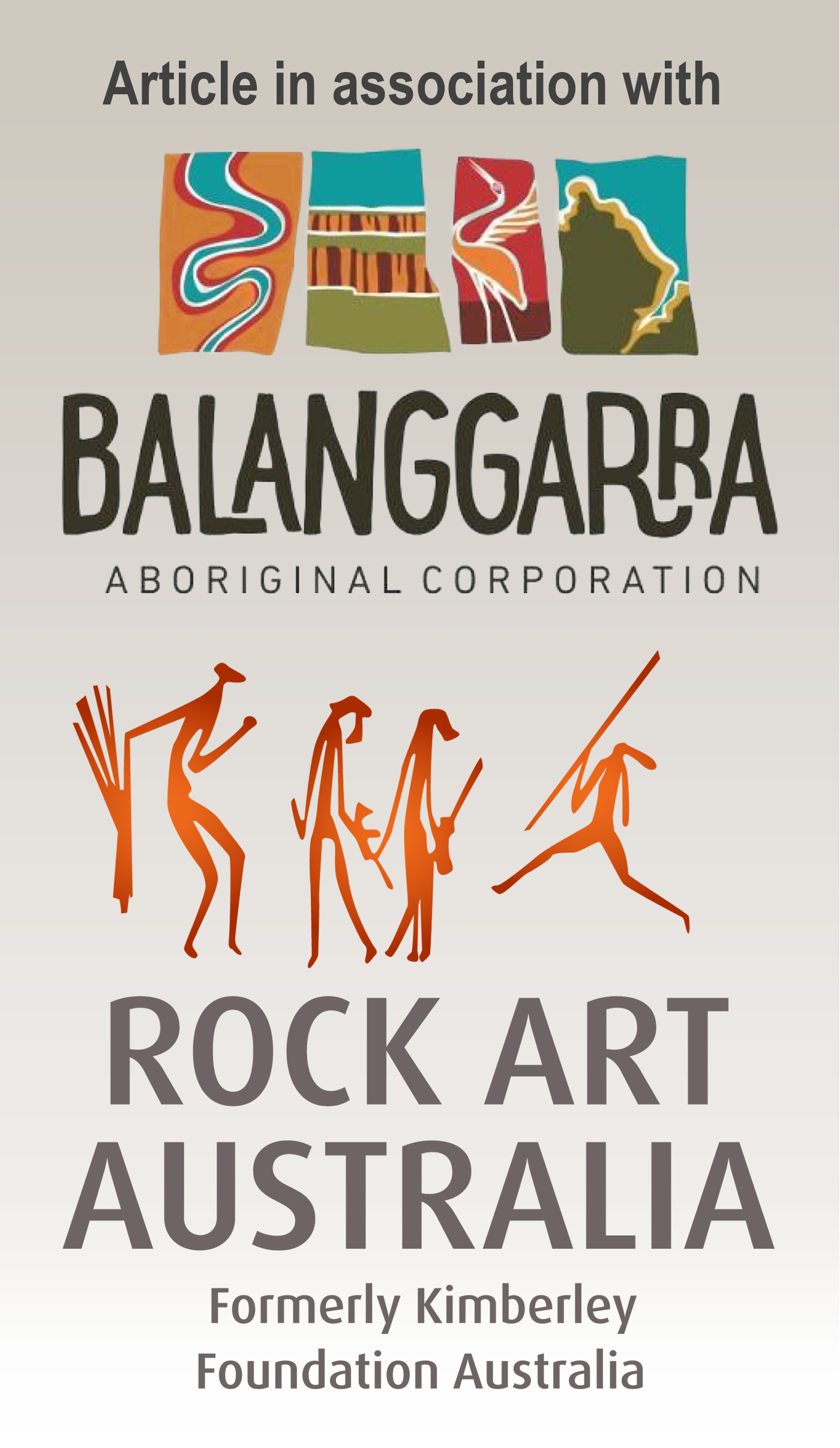

The earliest visible Kimberley rock art paintings are known as 'Naturalistic'. Researchers of Rock Art Australia describe the art as being dominated by large, sometimes life-size animals, fish, plants, and some human forms painted mostly in mulberry and red. Long flowing brushstrokes are used for motif outlines, solid infill to head, tail and limbs while body cavities have stippled irregular infill. This tradition may also include handprints/stencils and paint impressions of string and grass. Dating carried out by Rock Art Australia suggests the main period for Naturalistic paintings in the Kimberley spanned from at least 17,000 to 13,000 years ago. Also called: Archaic Period, Irregular Infill Animal Period.

A style of rock art known as 'Static Polychrome', these are schematized, usually straight human forms; they are dominated by groups of people rather than deities, depicting headdresses, multi-barbed spears and spear throwers. They are finely painted in red and orange, with faded white and yellow paints, creating the illusion of unpainted or ‘missing’ parts. They are often painted over Gwions, and may be up to 9,000 years old. These paintings are also referred to as Missing/Straight Part and Clothes Peg Figures.
The Painted Hand motifs represent a rock art expression often involving broad brush strokes and superimposed over the earlier art styles. Some are striking with intricate geometric designs. This tradition is enormously varied with bichrome and polychrome depictions of objects, humans, animals, plants, lines, finger dots and non-figurative motifs. This diversity may show the marking of clan estates during the Holocene (last 10,000 years). They are also referred to as Clawed Hand and Compartment Infill Period.
The Wanjina paintings represent the spirit ancestors and their representation in anthropomorphic form. Aboriginal people in northern and central Kimberley continue to identify with Wanjina, a continuous tradition dating to the last 4000 years. As figurations of supernatural power, images of Wanjina are characterised by halo-like headdresses and mouthless faces with large round eyes, set either side of an ovate nose. These ‘Creator Beings’ and the ‘Wunggurr Creator Snake’ are painted in many forms and can be repainted to ensure annual renewal of the seasonal cycle and the associated periods of natural fertility. The actual Wanjina is believed to either reside in the rock where it is painted or to have left its body there. They are also referred to as Regular Infill Period and Polychrome Art Period.
Since the late 1980’s the Getty Conservation Institute has undertaken training courses and projects in rock art conservation and management, including a one-year diploma course in Australia and short courses in California, as well as a field project in Baja California Sur.
The Rock Art Network subsequently emerged after a series of workshops held in South Africa from 2005 to 2011 as part of the Southern African Rock Art Project. This program was extended to Australia between 2012 and 2014 as an exchange between rock art specialists, managers, and custodian communities from southern Africa and Australia. It culminated in a forum in Kakadu National Park in 2014 and a document ‘Rock Art: A cultural treasure at risk – How we can protect the valuable and vulnerable heritage of rock art’ in which four pillars of rock art conservation policy and practice were identified.
Among the institutions and professionals affiliated with the Rock Art Network, the Bradshaw Foundation was identified as a key partner. Operating since 1992, the Bradshaw Foundation’s database of rock art information, visual resources and its robust social media presence made it an ideal partner to host the Rock Art Network’s online hub.
→ Subscribe free to the Bradshaw Foundation YouTube Channel
→ Australia Rock Art Index
→ Introduction to the Australia Rock Art Archive
→ Rock Art of the Kimberley
→ Dating the Rock Art of the Kimberley
→ Australia's Oldest Known Rock Art
→ Film - Griffith University's Laureate
→ ABC Radio National 'Nightlife'
→
Experts rush to map fire-hit rock art
→ The aftermath of fire damage to important rock art at the Baloon Cave tourist destination, Carnarvon Gorge, Queensland, Australia
→ Studying the Source of Dust
→ Rock Art of Western Arnhem Land
→ Australia's Aboriginal People
→ The Kimberley
→ Out in the Back Country - Hugh Brown
→ Bradshaw Foundation
→ Rock Art Network
